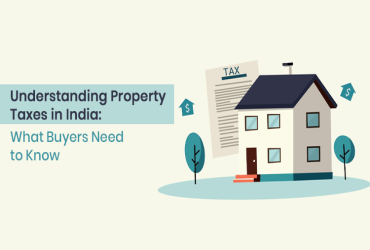
Purchasing a property is a significant financial decision, and understanding property taxes is an essential part of this process. In India, property taxes are levied by local municipal authorities and are used to maintain civic infrastructure and services. This blog will provide a comprehensive guide to property taxation in India, covering its types, definitions, payment processes, calculation methods, tax-saving strategies, and recent updates.
What is Property Tax?
Property tax, also known as house tax, is a recurring tax imposed on property owners by municipal authorities such as municipal corporations, panchayats, and municipalities. It applies to all real estate properties, including commercial and residential Projects, improvements made to the land, and attached land. However, vacant plots of land without any structures are typically exempt.
Types of Property Taxes in India
Property taxes can be broadly categorized based on the stage of property ownership:
1. Taxes During Property Purchase
|
Stamp Duty |
Levied by state governments during property registration. Rates vary between 4-6% depending on the state. |
|
Registration Charges |
Typically 1% of the property’s value. |
|
GST on Under-Construction Properties |
A 5% GST is applicable on under-construction properties (1% for affordable housing). No GST is charged for ready-to-move-in or inherited properties. |
2. Taxes During Property Ownership
|
The annual property tax is based on the assessed value of the property. |
|
Maintenance charges for civic services. |
3. Taxes During Property Sale
|
Capital Gains Tax |
Levied on profits earned from selling a property. It can be short-term (if held for less than 2 years) or long-term (if held for more than 2 years. Recent reforms have standardized the long-term capital gains (LTCG) tax rate at 12.5%. |
Methods of Property Tax Calculation
The calculation of property tax varies across municipalities and depends on factors like usage type (residential or commercial), usage type, location, valuation methods, and property size. The three primary methods are:
1. Capital Value System (CVS)
-
The tax is computed as a percentage of the property's market value.
-
The market value is determined by the government and revised annually.
-
Cities like Mumbai follow this system.
2. Annual Rental Value System (ARV)
-
Tax is based on the annual rental income that the property could generate.
-
Factors like amenities, location, market trends, and condition of the property are considered.
-
Commonly used in cities like Hyderabad and Chennai.
3. Unit Area Value System (UAS)
-
The price per unit of the built-up area is used to compute taxes.
-
This system conifers parameters like usage type, land price, and location.
-
Followed in cities like Patna, Delhi, Bengaluru, and Kolkata.
How to Pay Property Tax?
Both online and offline methods are available for paying property taxes:
1. Offline Payment
-
Visit the local municipal corporation office or designated banks affiliated with the municipal authority.
-
It provides details such as your property tax number or khatha number.
2. Online Payment
-
Most municipalities offer online portals for tax payments.
-
Log in to your city’s municipal corporation website.
-
Enter your property details to calculate dues and make payments through net baking or credit/debit cards.


.png)


3 Comments